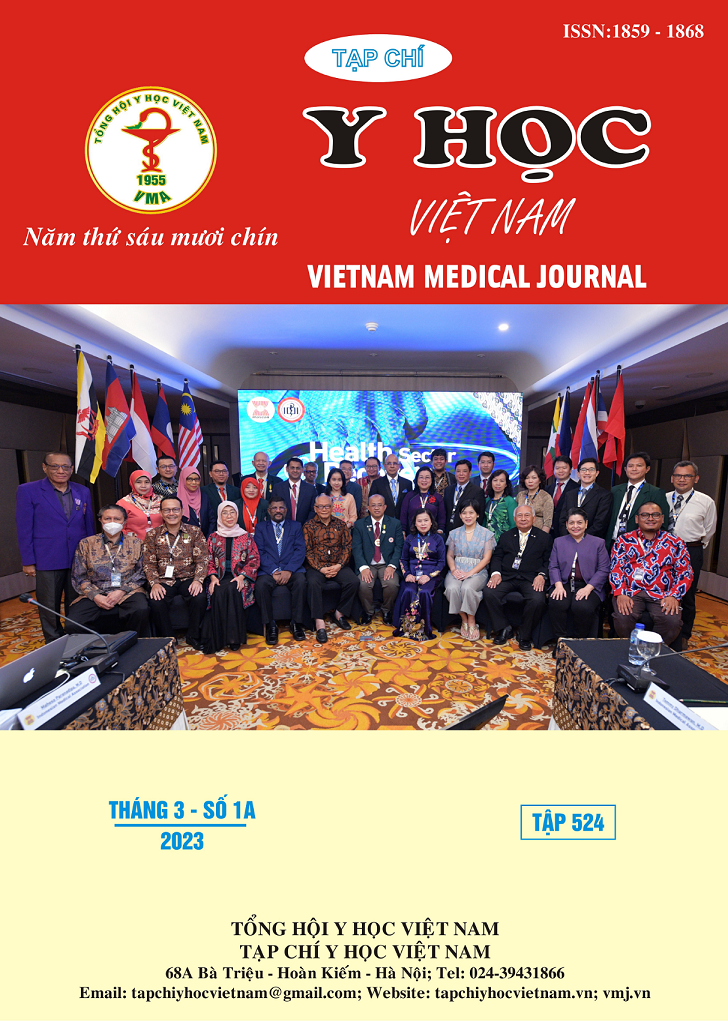TWO PEDIGREES OF BRUGADA SYNDROME WITH PATHOGENIC MUTATIONS IN SCN5A GENE
Main Article Content
Abstract
Introduction: Brugada syndrome (BrS) is an inherited cardiac arrhythmia that causes sudden death. Mutations in the SCN5A gene, which codes for the sodium channel, have been identified as a cause of Brugada syndrome. These are autosomal dominant inheritance. Genealogical research is one of the approaches to genetic diseases. Objectives: To describe the two pedigrees of BrS patients who had pathogenic mutations in SCN5A gene. Subjects and methods: The patients were diagnosed with BrS, have been identified as having a pathogenic SCN5A gene mutation and the patient's family members. Record the history and clinical features of everyone in the families. SCN5A gene mutation status was determined by Sanger gene sequencing technique. Using protein function prediction softwares to investigate the pathogenicity of the mutations. Results: Family 1 includes the patient and 4 members, having N109del mutation (pathogenic) in exon 3 and R1193Q mutation (benign) in exon 20. Family 2 includes the patient and 6 members, having R659W mutation (pathogenic) in exon 13.
Article Details
Keywords
Brugada syndrome, SCN5A gene, pedigree.
References
2. Hosseini S.M., Kim R., Udupa S., et al., Reappraisal of reported genes for sudden arrhythmic death: evidence-based evaluation of gene validity for Brugada syndrome. J Circulation, 2018. 138(12): p. 1195-1205.
3. Members A.T.F., Priori S.G., Blomström-Lundqvist C., et al., 2015 ESC Guidelines for the management of patients with ventricular arrhythmias and the prevention of sudden cardiac death: The Task Force for the Management of Patients with Ventricular Arrhythmias and the Prevention of Sudden Cardiac Death of the European Society of Cardiology (ESC) Endorsed by: Association for European Paediatric and Congenital Cardiology (AEPC). J Ep Europace, 2015. 17(11): p. 1601-1687.
4. Nguyễn Văn Điền L.Đ.T.v.N.Đ.H., Hội chứng Brugada nhân một gia đình. Tạp chí Tim mạch học, 2007. 47: p. 16-19.
5. Probst V., Veltmann C., Eckardt L., et al., Long-term prognosis of patients diagnosed with Brugada syndrome: results from the FINGER Brugada Syndrome Registry. J Circulation, 2010. 121(5): p. 635-643.
6. Cerrone M., Remme C.A., Tadros R., et al., Beyond the one gene–one disease paradigm: complex genetics and pleiotropy in inheritable cardiac disorders. J Circulation, 2019. 140(7): p. 595-610.
7. Gourraud J.-B., Barc J., Thollet A., et al., The Brugada syndrome: a rare arrhythmia disorder with complex inheritance. J Frontiers in cardiovascular medicine, 2016. 3: p. 9.
8. Brugada P., Brugada R., and Brugada J., Sudden death in patients and relatives with the syndrome of right bundle branch block, ST segment elevation in the precordial leads V1to V3and sudden death. J European heart journal, 2000. 21(4): p. 321-326.
9. Risgaard B., Jabbari R., Refsgaard L., et al., High prevalence of genetic variants previously associated with Brugada syndrome in new exome data. J Clinical genetics, 2013. 84(5): p. 489-495.
10. Wilde A.A. and Amin A.S., Clinical spectrum of SCN5A mutations: long QT syndrome, Brugada syndrome, and cardiomyopathy. J JACC: Clinical Electrophysiology, 2018. 4(5): p. 569-579.


